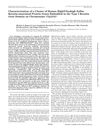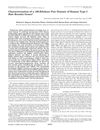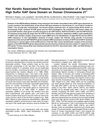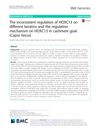HOXC13 Is Involved in the Regulation of Human Hair Keratin Gene Expression
February 2002
in “
Journal of Biological Chemistry
”
TLDR HOXC13 is crucial for regulating hair keratin genes in hair follicles.
The study explored the role of HOXC13 in regulating human hair keratin gene expression, revealing that HOXC13 directly activated specific hair keratin gene promoters by binding to TAAT and TTAT motifs in their proximal promoter regions. This binding was unique to HOXC13 compared to other paralogous group 13 members, indicating its specific role in hair keratin expression during early trichocyte differentiation. HOXC13 was expressed in the human anagen hair follicle, particularly in trichocytes, and its expression pattern matched certain hair keratins like hHa5 and hHa2. The study confirmed HOXC13's function as a transcription factor in hair keratin gene regulation, highlighting its importance in hair follicle-specific gene regulation and suggesting potential cofactors like Meis1 could influence its activity.



